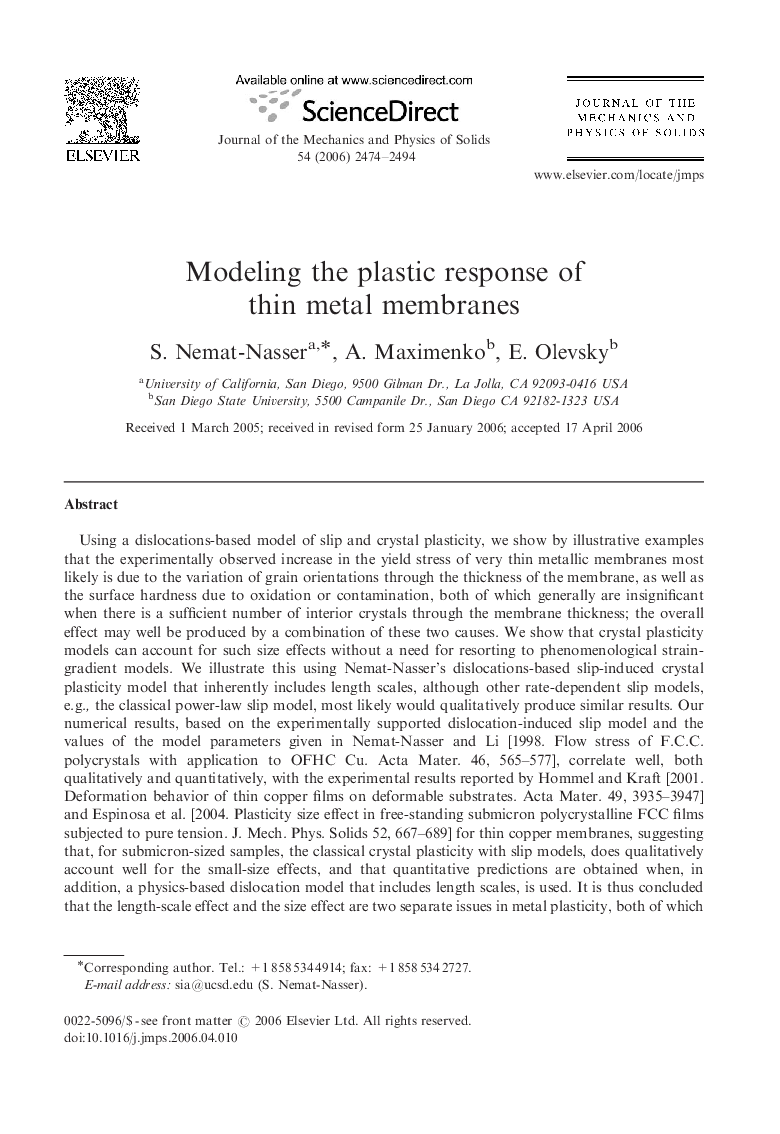| Article ID | Journal | Published Year | Pages | File Type |
|---|---|---|---|---|
| 800202 | Journal of the Mechanics and Physics of Solids | 2006 | 21 Pages |
Abstract
Using a dislocations-based model of slip and crystal plasticity, we show by illustrative examples that the experimentally observed increase in the yield stress of very thin metallic membranes most likely is due to the variation of grain orientations through the thickness of the membrane, as well as the surface hardness due to oxidation or contamination, both of which generally are insignificant when there is a sufficient number of interior crystals through the membrane thickness; the overall effect may well be produced by a combination of these two causes. We show that crystal plasticity models can account for such size effects without a need for resorting to phenomenological strain-gradient models. We illustrate this using Nemat-Nasser's dislocations-based slip-induced crystal plasticity model that inherently includes length scales, although other rate-dependent slip models, e.g., the classical power-law slip model, most likely would qualitatively produce similar results. Our numerical results, based on the experimentally supported dislocation-induced slip model and the values of the model parameters given in Nemat-Nasser and Li [1998. Flow stress of F.C.C. polycrystals with application to OFHC Cu. Acta Mater. 46, 565-577], correlate well, both qualitatively and quantitatively, with the experimental results reported by Hommel and Kraft [2001. Deformation behavior of thin copper films on deformable substrates. Acta Mater. 49, 3935-3947] and Espinosa et al. [2004. Plasticity size effect in free-standing submicron polycrystalline FCC films subjected to pure tension. J. Mech. Phys. Solids 52, 667-689] for thin copper membranes, suggesting that, for submicron-sized samples, the classical crystal plasticity with slip models, does qualitatively account well for the small-size effects, and that quantitative predictions are obtained when, in addition, a physics-based dislocation model that includes length scales, is used. It is thus concluded that the length-scale effect and the size effect are two separate issues in metal plasticity, both of which are nicely accounted for by physics-based dislocation models of crystal plasticity without a need to include the plastic strain gradient.
Related Topics
Physical Sciences and Engineering
Engineering
Mechanical Engineering
Authors
S. Nemat-Nasser, A. Maximenko, E. Olevsky,
